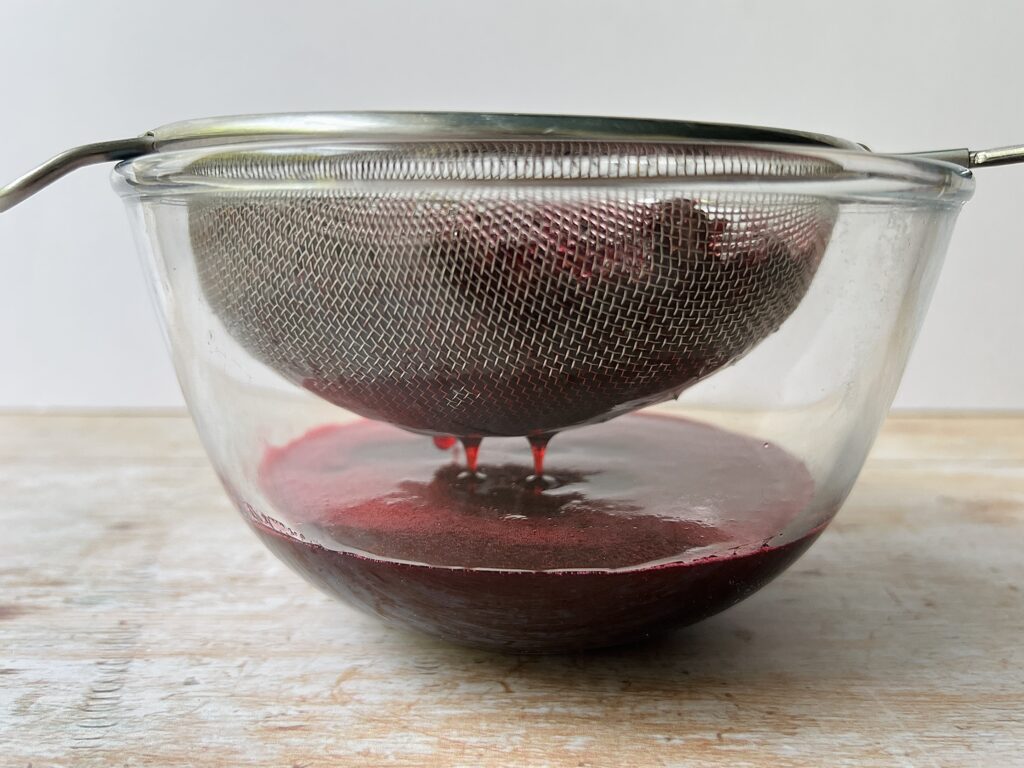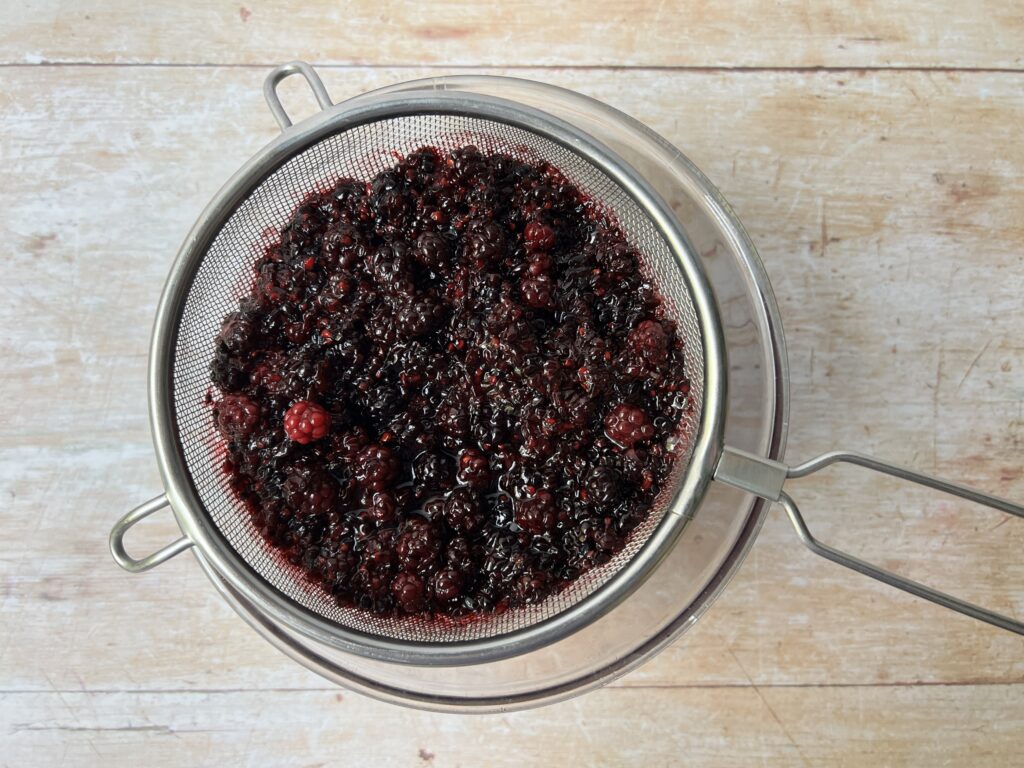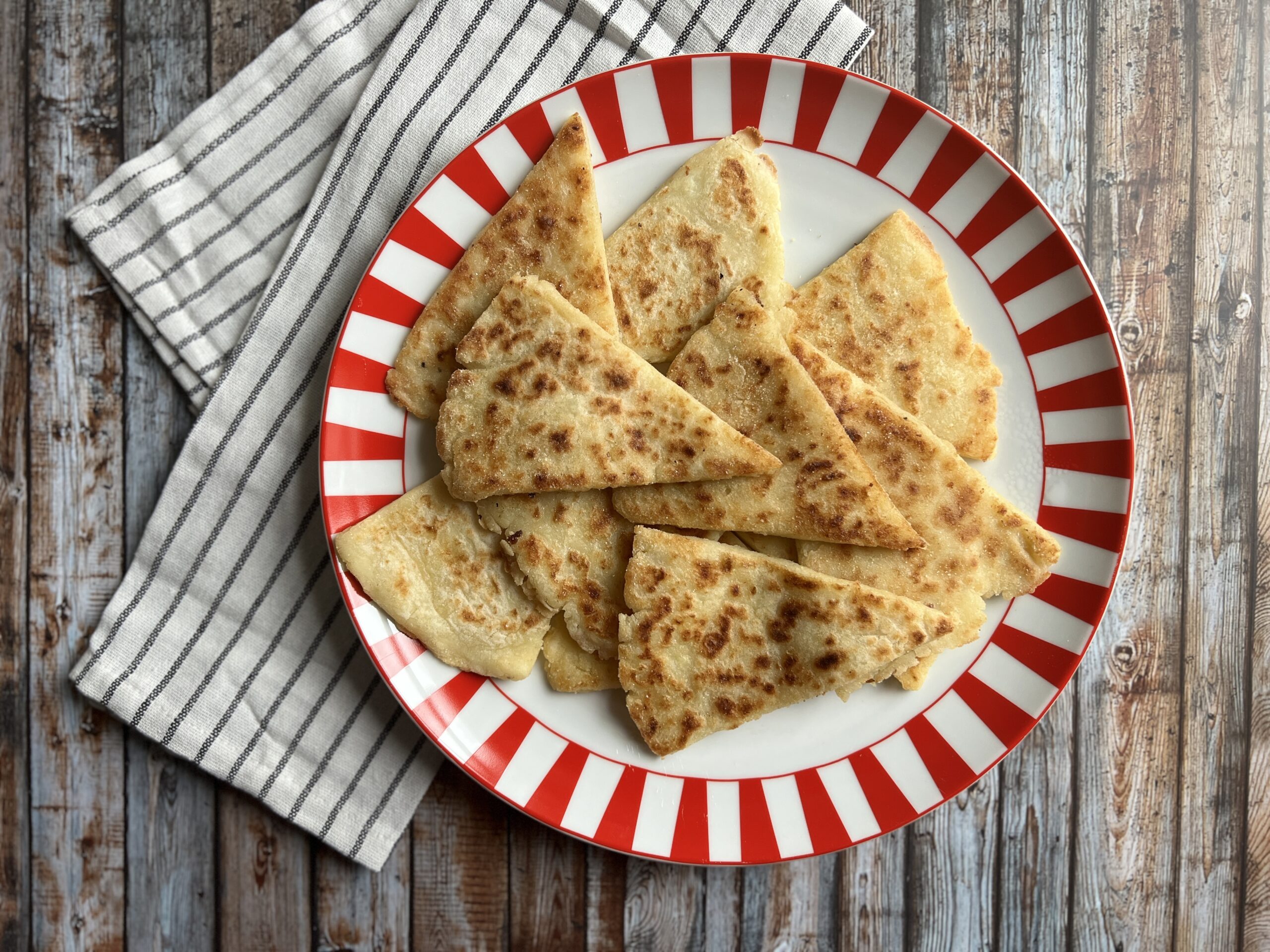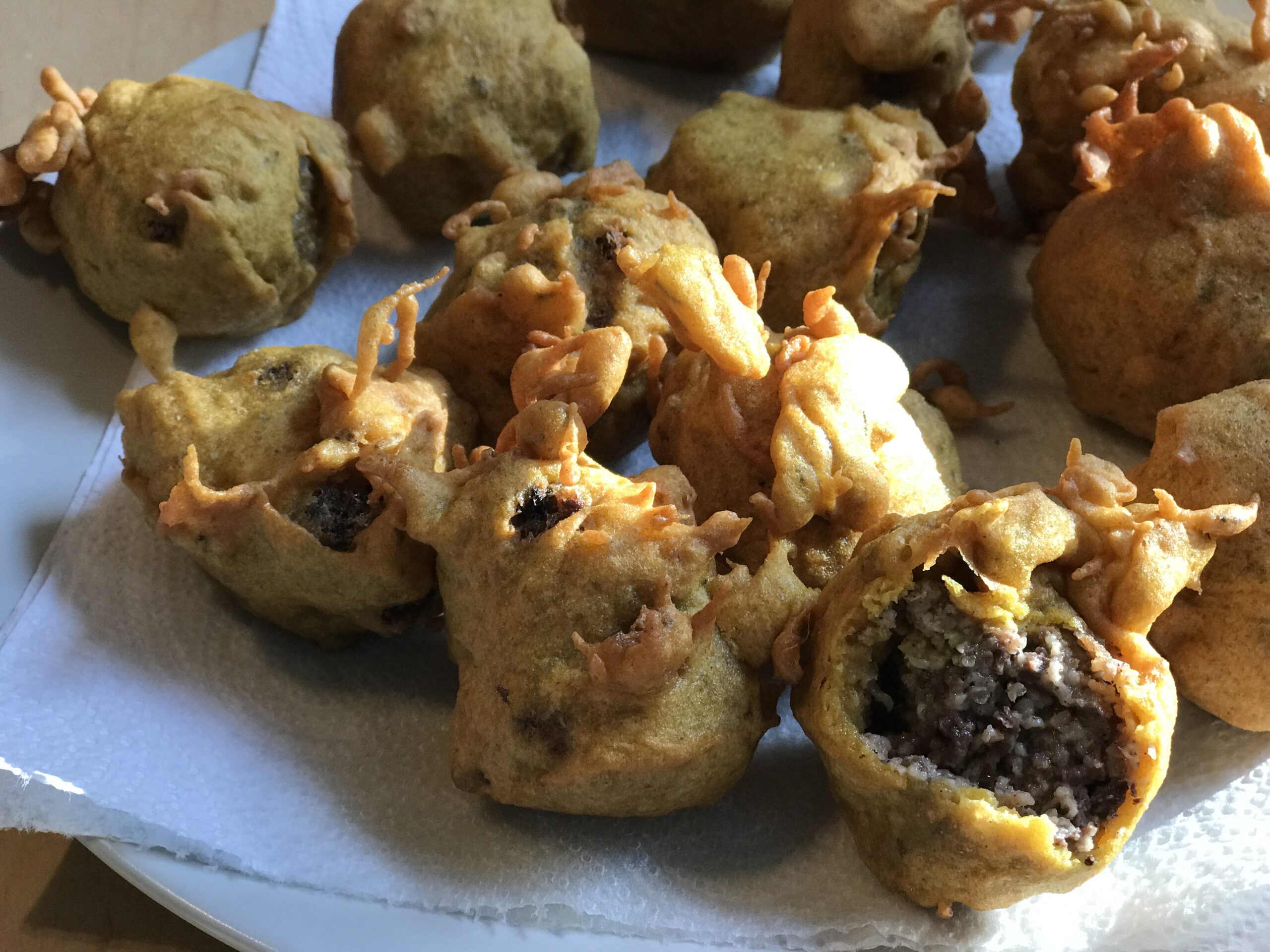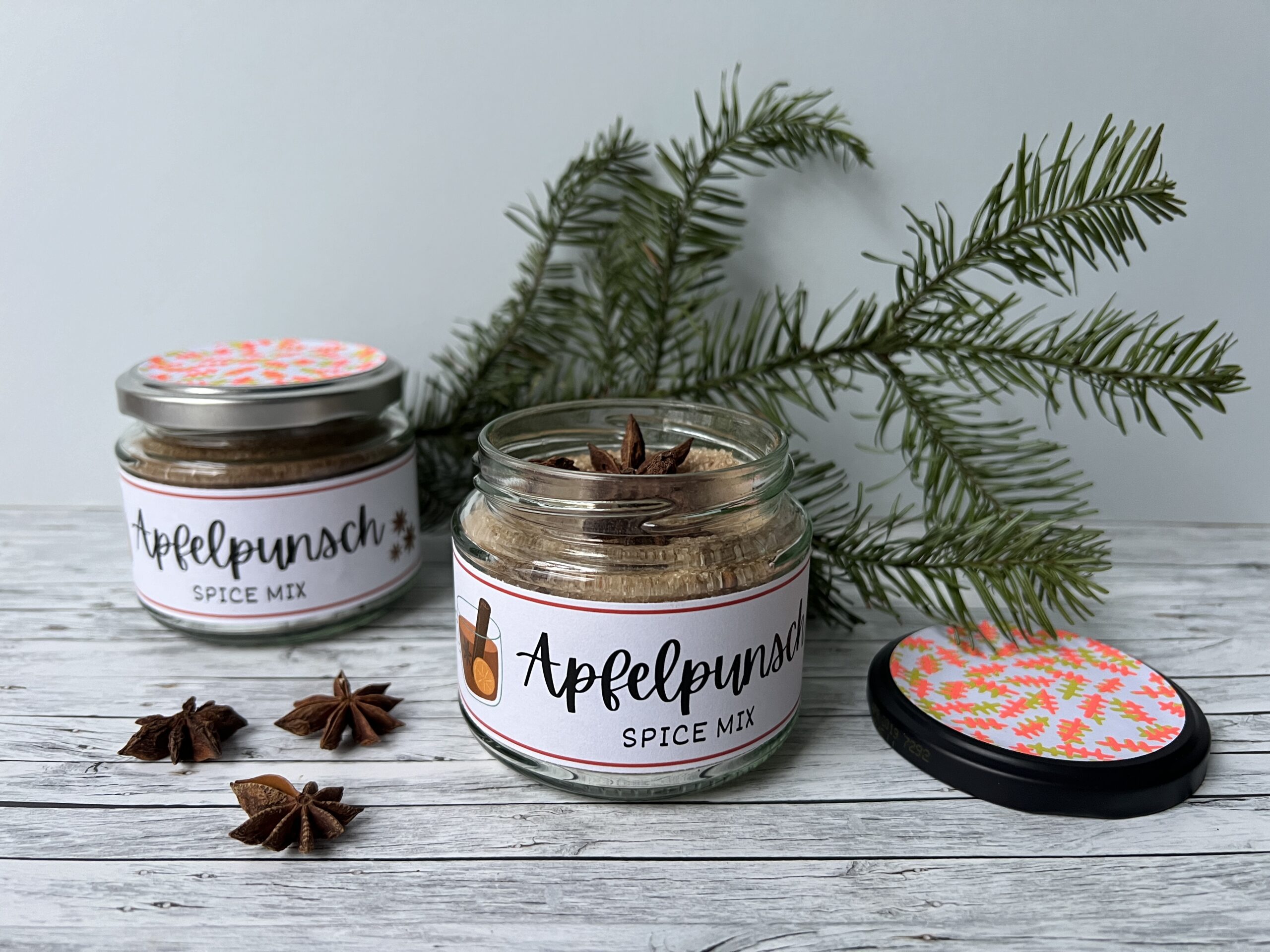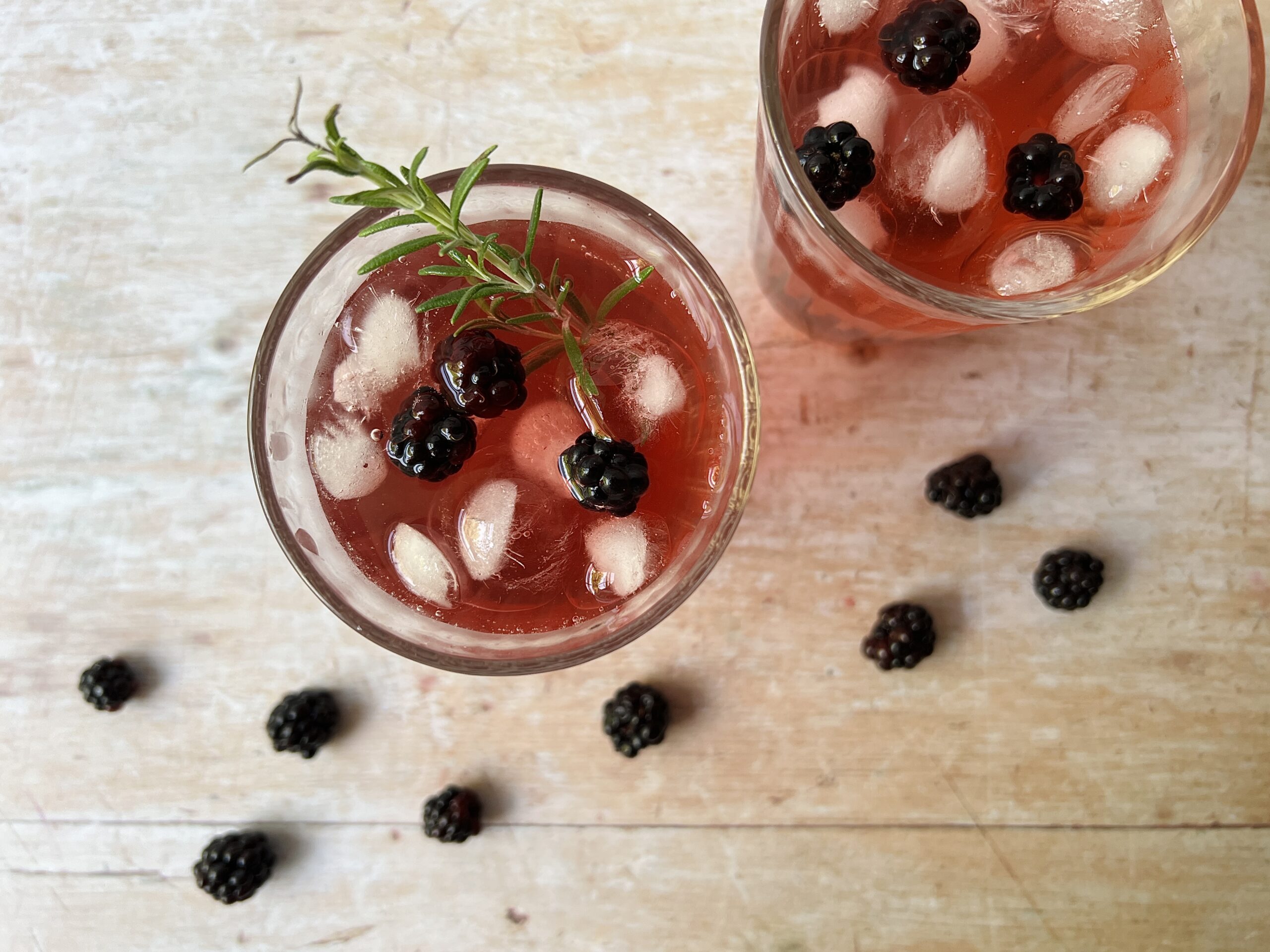
How to Make a Simple Bramble Shrub
Today I want to talk about shrubs! Not the kind that grows in the woods, but the kind that you drink. I know everyone hates a long, rambling recipe into, but if you’re new to shrubs hear me out on this one! Otherwise, just scroll straight down to the recipe.
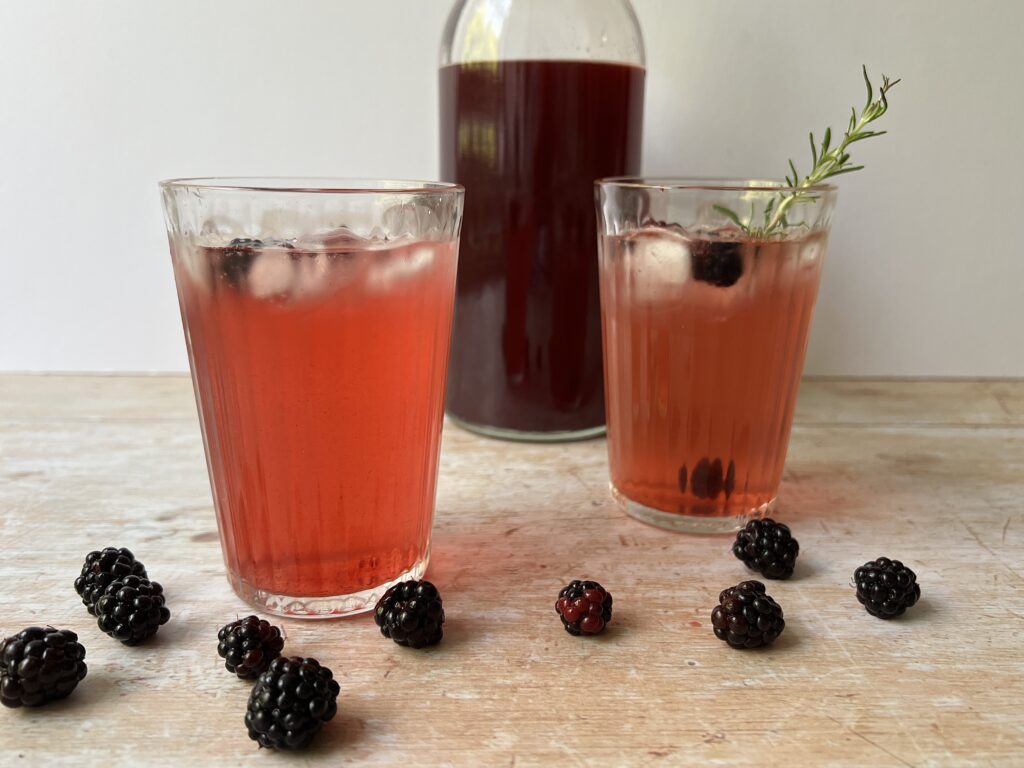
I first read about shrubs in ‘The Simple Things’ magazine a couple of years ago, and have been wanting to try my hand at them ever since. Historically, there were actually two different but related kinds of drinks both referred to as shrubs. In a nutshell, one was a fruit liqueur popular in 17th and 18th century England, the other was a vinegar-based sirup popular in America’s colonial era, which was mixed with spirits or water to make a cocktail or soft drink. It’s the latter – also known as drinking vinegar – that has made a resurgence in recent years as an ingredient in both alcoholic cocktails or as a non alcoholic alternative for a refreshing soft drink. The word “shrub” is derived from the Arabic sharāb, meaning “drink.”
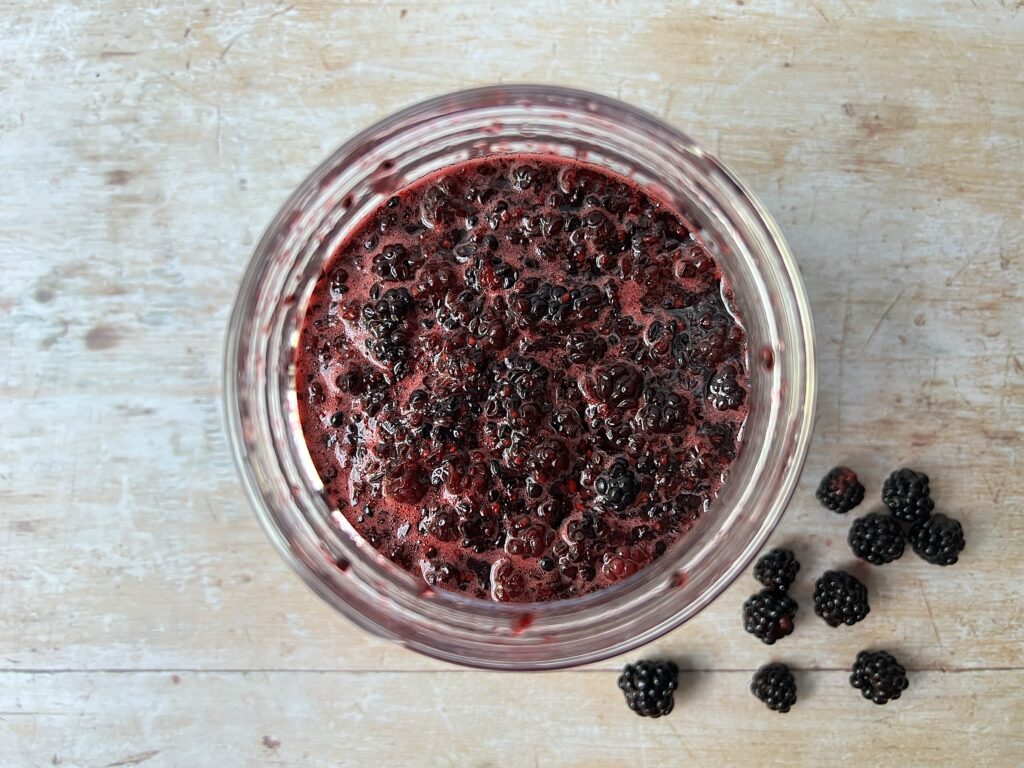
Having read many, many articles and recipes now on the subject of shrubs, it seems that there are two main ways of making them. The traditional way is to soak fruit – in particular berries – in vinegar for several days to infuse and ferment, then strain out the fruit and mix the liquid with a sweetener such as sugar or honey. This goes back to when vinegar was used to preserve fruit, in the absence of fridges. The majority of recipes I looked at, however, themed to favour the slightly faster method of mixing the fruit or berries with sugar first and then adding the vinegar in the final step. Since I’m a little impatient, I opted for the latter method.
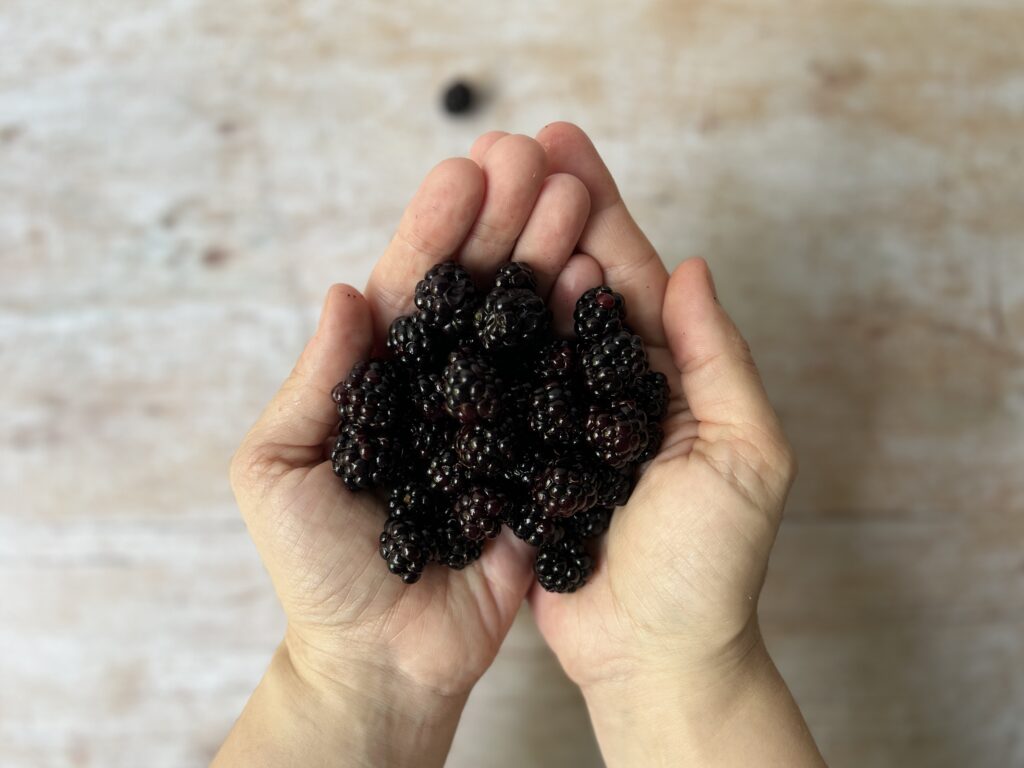
Now, if you read ten different recipes, you’ll probably get ten different variations on making your shrub, from what vinegars or sweeteners to use, to whether to boil or cold infuse the liquid, and what ratios to use. I think the key is to experiment a little and find out what works best for you in terms of taste. If you are starting out and making a shrub for the first time, I’d recommend starting with the basic 1:1:1 ratio, i.e. one part fruit, one part sugar, and one part vinegar. Then you can take it from there, e.g. more sour fruit such as rhubarb may need a little more sugar.
Bramble Shrub Ingredients
So here’s how I made my simple bramble shrub for beginners:
- 500g brambles
- 500g caster sugar
- 500g apple cider vinegar
I used golden (unrefined) caster sugar, and raw apple cider vinegar, but regular caster sugar and cider vinegar is also fine.
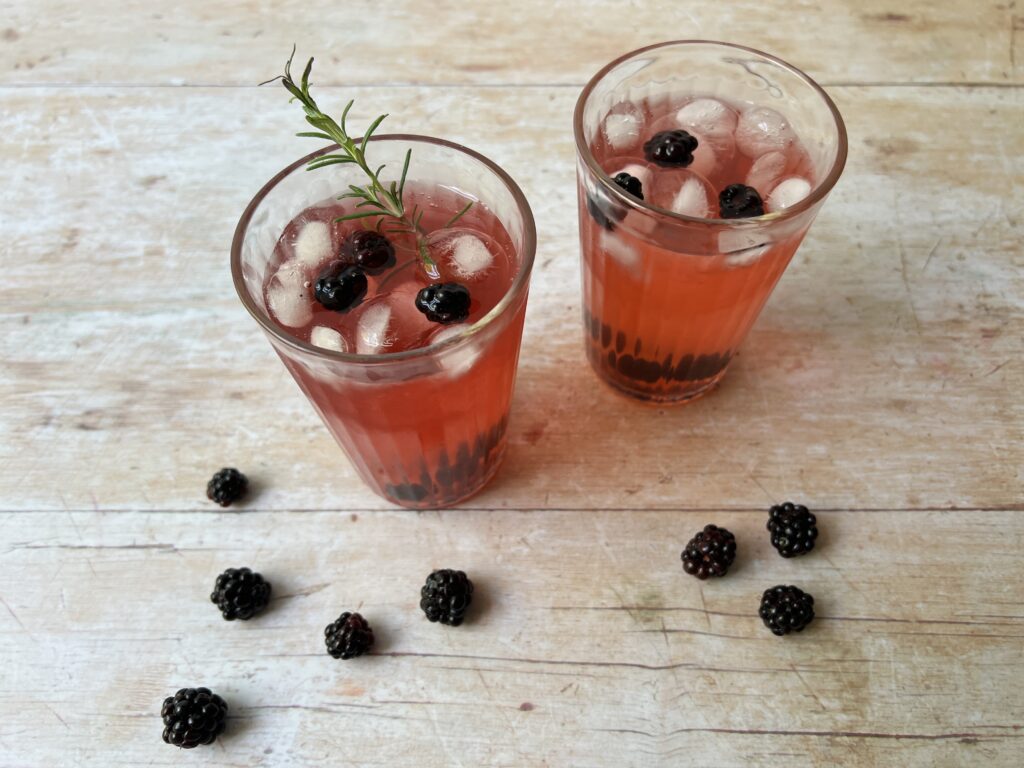
Bramble Shrub Method
Wash the brambles and place them in a bowl or large jar. I used my special fermenting jar for this, but any jar or bowl that holds at least 1 litre would do (I use this jar – Amazon affiliate link).
Pour over the sugar and stir it in well, crushing the brambles a little to get them started. Then cover the bowl or jar with clingfilm or an eco friendly alternative, and place in the fridge for 24 – 48 hours. If your berries are super ripe, this step will be a bit faster, but if they are still quite firm you’ll want to give it the full 48 hours.
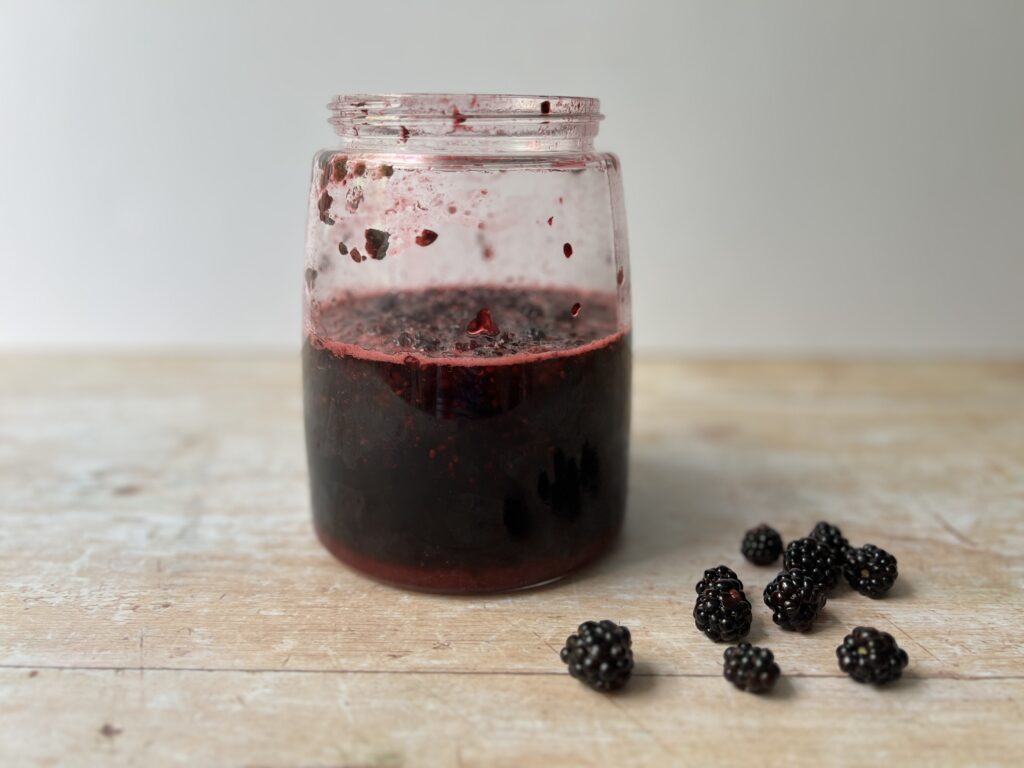
Stir the berries every 6-8 hours to make sure all the sugar gets dissolved. When ready, the berries should be swimming in a glistening sirup.
Strain the berry mixture through a fine sieve, catching the sirup in another bowl. If you find you still have bits of pulp or seeds floating in your sirup, you can strain it again through a sieve lined with a muslin, but I find that my sieve is fine enough and usually does the job on its own.
Tip: Don’t throw out the strained fruit, the sweetened pulp tastes great stirred in to porridge for a seasonal breakfast, or folded in to Greek yoghurt for a yummy dessert!
Measure 500ml of apple cider vinegar in to a sterilised bottle – a funnel really helps with this – then pour in the berry sirup (the reason I don’t strain the sirup in to the bottle straight away, and catch it in a bowl first, is in case I need to strain it twice). Seal the bottle tightly, then turn it a few times for the vinegar and sirup to mix.
Store in the fridge, and leave for at least 72 hours before tasting, giving the bottle a little shake once or twice a day. The longer you leave it, the more it will mellow. The last batch I made was perfect after two weeks of resting.
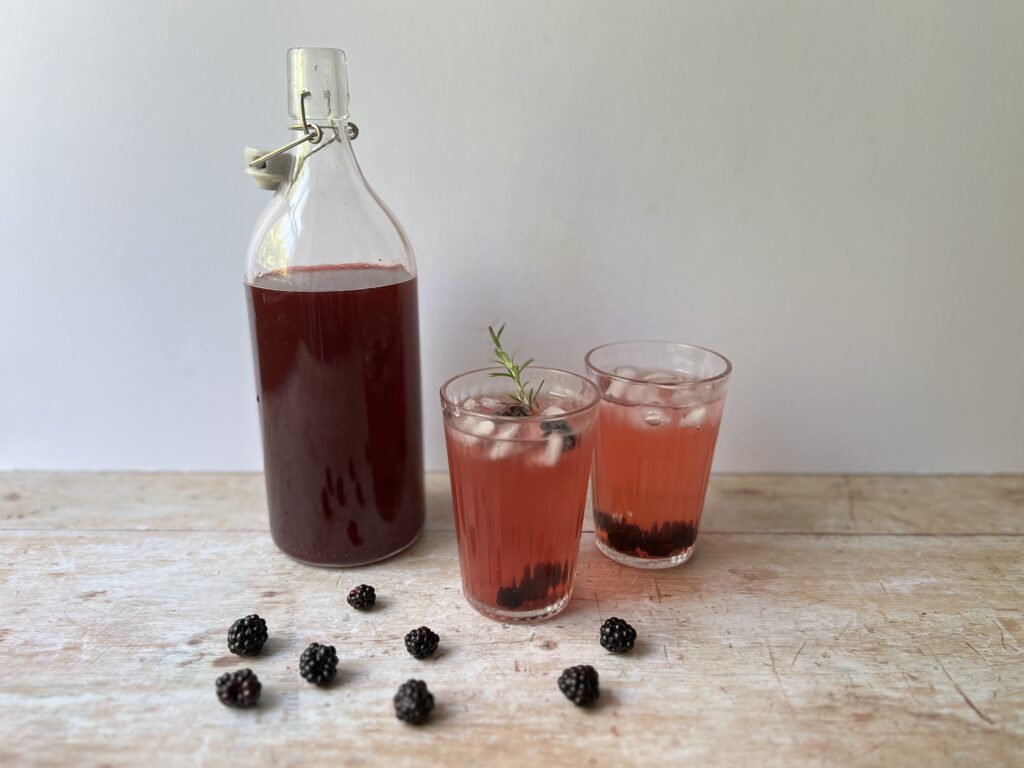
To serve, measure out ca. 2 tablespoons of shrub sirup in to a glass and top up with sparkling water. If you’re feeling really fancy, add a sprig of rosemary for some extra flavour. I think bramble and rosemary is a heavenly pairing!
Shrub Variations
As I mentioned above, shrubs are great to experiment with, e.g. certain fruits will go better some some kinds of vinegars than others. Or more sour fruit such as rhubarb may need more sugar. I can’t wait to try out some more flavour combinations.
- Sugar: Instead of caster sugar, try experimenting with other types of sugar such as soft brown sugar, or demerara sugar.
- Vinegar: Instead of apple cider vinegar, try red wine vinegar, white wine vinegar, or balsamic vinegar.
- Fruit: Brambles and other berries, such as blueberries or strawberries, are classic shurb favourites, but you can experiment with other fruit too. Try grated apple, or chopped up rhubarb.
- Extra flavourings: I mentioned about adding rosemary to my shrub drinking when serving, but once you have mastered the shrub basics you can also add herbs or spices at the initial stage when you are infusing the berries with the sugar. Basil, mint, thyme and peppercorns are all ingredients that regularly popped up in the articles and recipes I perused.
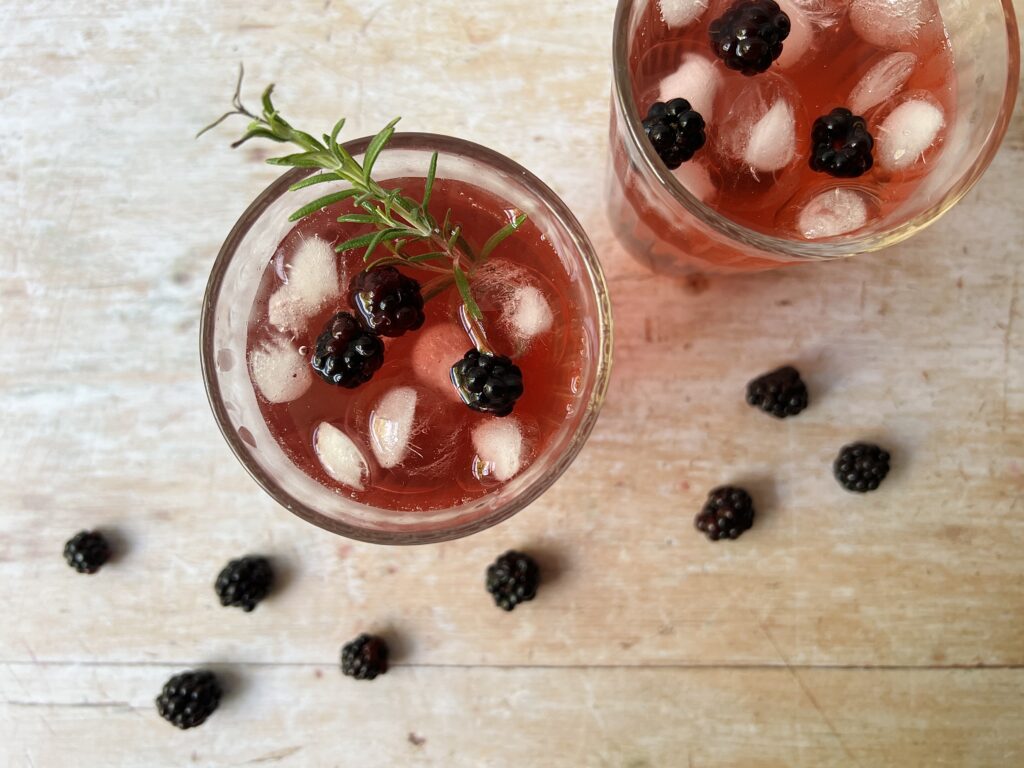
Shrubs are a great way to use up a glut of fruits from your allotment, garden – or over enthusiastic foraging expeditions! Using very ripe fruit is best, as it takes less time to macerate. Event over ripe or bruised fruit is fine, as long as it’s not actually mouldy or rotting, as you’ll be bashing it up anyway.




